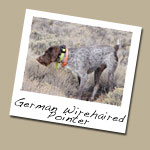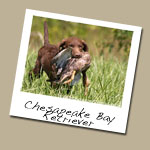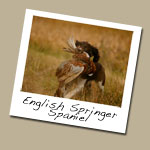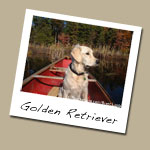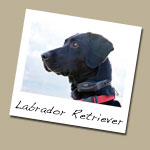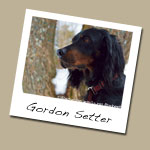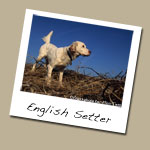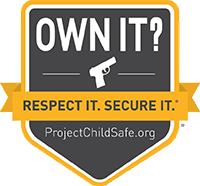Ten Tips for Choosing a Preserve Hunt
By Jim Casada
For the National Shooting Sports Foundation
With each passing year, hunters across our country find it increasingly difficult to locate a place to hunt. An endearing part of Americana-a rural lifestyle where it was possible to walk from home, shotgun cradled in one's arm, and enjoy small game hunting-now belongs to a world we have largely lost. Sprawling suburbs, widespread development, soaring human populations and other factors have combined to dramatically reduce public-hunting opportunities close to home.
Fortunately, bird-hunting preserves provide an enjoyable return to the "good old days" of wingshooting.
Today's preserves normally offer opportunities to hunt any of a number of species including bobwhite quail, pheasants, Hungarian partridges, chukars, even ducks, and each can appeal to a variety of wingshooting perspectives. It's a chance to turn back the hands of time for those who look back in longing for those halcyon days of yesteryear when an afternoon might find you kicking up a covey or two of quail in the back forty, or finding pheasants along a brushy fencerow.
More advantages of a hunting preserve: Individuals who have never hunted upland birds but think they might want to do so can get a fruitful introduction to wingshooting. Similarly, dog owners anxious to give their canine companions exposure to the best of all training tools-plenty of birds-find preserves a welcome venue for training sessions.
With these considerations in mind, what do you need to look for when choosing a preserve? After all, you are going to pay for the outing, and doing a bit of homework can go a long way toward making your experience a pleasant one. Here are 10 key considerations to keep in mind as you select a preserve for your hunt.
What About Amenities? Find out what type of facilities the preserve offers. An opportunity for a warm-up session on a five-stand course, sporting clays layout, trap field or skeet range is a real plus. Many preserves offer meals, and finishing off a day afield with some sumptuous fare-maybe even a meal of gamebirds-can put a cherry atop a hunter's sundae. Likewise, lodging may be available for those wanting two or three days of activity.
Your Dogs or Mine? Ask about the preserve's dog policies. Can you bring your own dogs, and if so, are kennel facilities available should you wish to stay overnight? If you will be hunting behind dogs belonging to the preserve and handled by its guides, inquire about whether they are pointers or setters (and you may be able to express a preference).
Can You Release Details? Be sure you get all the details on the types of birds you will be hunting and how and when they are to be released.
Any Package Deals? Inquire about the various types of hunting packages the preserve provides. An "all quail" hunt will mean more shooting; a mixture that includes a couple of pheasants or Hungarian partridge can add a bit of spice to the outing. You will also want to establish the ground rules on extra birds (most preserves charge a set figure for each bird beyond the agreed-upon number for your hunt). Don't forget to ask about special deals, trial packages or big-party offerings such as tower pheasant shoots or early autumn dove hunts.
Getting Physical? You will want to know exactly how the hunting is done. It may be on foot following a guide, from a 4WD vehicle where you get out when the dogs go on point or even, in some regions, from traditional mule-drawn wagons. Also, if your fitness or agility is a concern, ask about how much walking will be involved and check on how rugged the terrain is.
See Shells? Ascertain the ammunition situation in advance. For some hunts, shells are provided. Others require you to bring your own or buy shells. If the latter situation prevails, make a point of getting ammunition in advance.
Got Paperwork? Be sure you know about licensing requirements. These vary from state to state. Most common is a relatively inexpensive preserve license, but you might be required to have a small game permit or special stamp. Most preserves will be able to sell you the necessary licenses, but you don't want to arrive on the scene and suddenly discover they cannot handle the requisite paperwork.
Who's on My Hunt? Be clear on how the hunting is done in terms of hunter numbers. The standard format is two hunters and a guide on the ground moving in on a point, but sometimes guides will allow three gunners at a time if they are comfortable with their safety awareness and gun handling. Usually you pay for the number of birds released rather than by the person, so hunting with a guide by yourself is likely to be possible if that is the way you want to go.
Will I Get My Birds? You've paid for the birds that were released, and in most cases cleaning and packaging of the game you've killed should be included in the hunt. To be sure you get the ones you shot, request them as opposed to a comparable number that have been pre-frozen.
Let the Buyer Beware? Absolutely! Ask for and check out references. This should be an obvious step, yet all too often it is overlooked.
Follow these 10 tips and chances are you will derive an ample measure of wingshooting pleasure from your preserve hunt.
EDITOR'S NOTE: Jim Casada is a lifelong hunter and full-time freelance writer. For more information on his books and activities, visit www.jimcasadaoutdoors.com.
|


